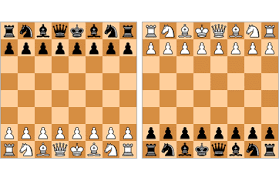In this post, I am going to show you how to approach your opponent's king in multiple common situations.
N.B.: I am not talking about how to force mates with a hand full of pieces; my idea is to show the reader how to approach certain key positions when he or she has few pieces in hand.
In this situation, the typical mistake is for Black to drop a pawn on f2 instead of h2:
You have to play P@h2+ so that if your opponent goes to h1, he or she would be mated with N@f2, while if he or she goes to f1, you just promote to a queen. In comparison, after P@f2+, White just plays Kf1 and is perfectly safe.
In the next diagram, you must play P@d7+ in order to increase your pressure:
The most common mistake for White is to play P@f7+, which does not bother Black at all because after Kd8, Black is perfectly safe.
Now, I will talk about the common N@h5 drop. This position is pretty common:
Well, is N@h5 always dangerous? It depends. Normally, this move is countered by Rg8, but if there is a White bishop on d3, White can just take h7; thus, N@h5 is only dangerous if there is an open bishop on d3. For that reason, Black must keep the e4 square covered. Some people may argue that even if White’s light-squared bishop’s diagonal is closed off by a piece on e4, White might play P@h6, take Pxg7, and drop a knight on f6 to make Black sacrifice his or her queen. Of course, that’s perfectly okay. White need a lot of time to do all of this and, in fact, White must also have 2 Ns in hand (one for N@h5, the other for N@f6+) to be able to do this combination. In the meantime, Black could very well create a dangerous counterattack.
Now, I will show you another common situation:
The best way to approach this position is for Black to just move his or her bishop back. N@f2+ is unavoidable and it's really unpleasant for White to deal with; it might even prove lethal!
In the following diagram, a common mistake is to play Nxg2:
Nxg2 is a really slow move because your knight becomes a friendly piece to your opponent's king, shielding it from your other more dangerous pieces. Remember: a knight next to the king is a friendly piece! The best approach in this position is to play Ne2+ or N@e2+ and then to put a pawn on h3 (P@h3). It is important to pressurize the g2 square with diagonals only.
The following pattern is a very common checkmating pattern that you must know when you sacrifice on f2/f7:
In this position, Black should play 1…N@g1+ 2. Rxg1 fxg1=N+ 3. Ke1 @f2#
Here is another common mating pattern:
White should play 1. Nxh7+ Rxh7 2. N@g6+ Ke8 3. P@f7#
In the next diagram, I will show you how to checkmate a safely castled Black king (assuming White has a hand full of pieces – R, Q, N, and diagonal-moving pieces):
The best move for White is R@h8+!, forcing Black to take the rook; Black will then face a barrage of checks leading to checkmate. For example: 1. R@h8+ Kxh8 2. hxg7+ Kxg7, and now, depending on what you have in hand and the other Black pieces on the board, checkmate should be easy to find.
Here is another mating pattern:
A common mistake is to play Nh5+ and Q@g7+, which often might lead to losing the Black king in the middle of the board. Instead, Q@g5+ seals off the king and, with just 2 diagonal-moving pieces in hand, leads to checkmate.
Often, in some bughouse positions, the king will remain in the center and 1. Rg1/Rg8 will be played:
If you have a hand full of pieces, 1…R@f1 will most likely mate in such positions, but generally, it's a common mistake. People tend to keep checking when attacking, which is often not a good idea. 1…R@h1 is usually the correct move in such positions.
This is a very important pattern – dropping pieces on 1st/8th rank to threaten promotion (Black just played N@e1!):
Here is another similar pattern which you can often see in the Nf6 - d5 setups (see link, 1. Nxd5 Bxd2+ 2. Qxd2 axb2 3. Rd1 Qxd5 4. Bd3 line, comment “c1 is coming and after Rxc1, either of the intermezzos B@c3 or P@c3 and P@d2 are a nightmare scenario for White”):
If 1. Rxc1, 1…B@c3 or 1…P@c3 would be really unpleasant.
OK, I think that's enough for now. I hope I didn't miss any important patterns!
